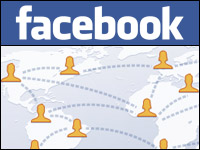
Last week, media giants including the Associated Press, The Washington Post, and Dow Jones sent a cease-and-desist letter targeting the iPad app Zite, which aggregates news based on a user’s Twitter and Google Reader activity. It may not be legal or fair for apps like Zite to collect content and present it absent the originator’s advertisements, but many observers argue that this is where the industry is headed, whether anyone likes it or not.
“Readers are looking for better ways of consuming content, and they aren’t getting it from traditional publishers. Why not learn from Zite and others like it instead of threatening to sue them?” asks GigaOm’s Mathew Ingram. This might sound like a replay of the debate over online music distribution, but it may be more even complicated since, when it comes to content, almost anyone can be a producer.
In his engaging new bookCuration Nation, Magnify.net CEO Steven Rosenbaum explains why information “curators” are gaining in importance. He makes the controversial argument that machines can’t do the job as well as humans. What exactly is an information curator? Rosenbaum posits that “it is about selection, organization, presentation, and evolution.”
A Human Enterprise
For example, Chris Anderson, the organizer of the popular TED conferences, calls himself the event’s “chief curator.” But one doesn’t need to run a big conference to be an information curator. Someone who makes a list of all the things new parents need for their baby’s first year of life is a curator, as is someone obsessed with Lamborghini cars who makes a hobby of reviewing and cataloging each one that has ever hit the market.
Investor Ester Dyson says she provides a curator-type service by taking photos of swimming pools in hotels all over the world and posting them on Flickr so that fellow-traveling swimmers can find good places to stay and exercise. But what’s so special about a human doing these tasks versus a machine?
Rosenbaum argues that one can think of it as “art vs. science.” “Show me a computer that can create music or paint a painting,” he says. “Curation is a human enterprise.”
Techies in Silicon Valley might beg to differ, but Russian investor Yuri Milner of Digital Sky Technologies took a middle ground in recentremarks to an audience in Abu Dhabi: “The question is how do you select what’s relevant for you, and my guess is that it’s probably going to be 50 percent driven by your network and 50 percent driven by algorithms.”
Speed Kills
So readers want personalized content — that’s not surprising. The trick will be in finding the right business model. Zite clearly overstepped its boundaries by repackaging intellectual property to look too much like its own. To its credit, however, it responded by quickly shifting its display to be more true to the source in a “Web view mode.”
This can be contrasted with historical examples found in Rosenbaum’s book. For instance, he reviews the beginnings of Reader’s Digest and Time magazine, both of which were content aggregators rewriting articles from other publications. Back then, he says, “there was not a lot of brooding about other people’s intellectual property rights.”
So, what has changed between then and now? If Reader’s Digest didn’t already exist, could it start in today’s environment?
Rosenbaum explains that one of the biggest differences is the speed in which the articles can be copied. “Reader’s Digest didn’t damage the original publication.”
Figuring out how to manage the huge demand for curation without damaging property rights is an important problem to be solved. When that happens, creative folks like writers for newspapers and magazines might be some of the biggest winners.





















































